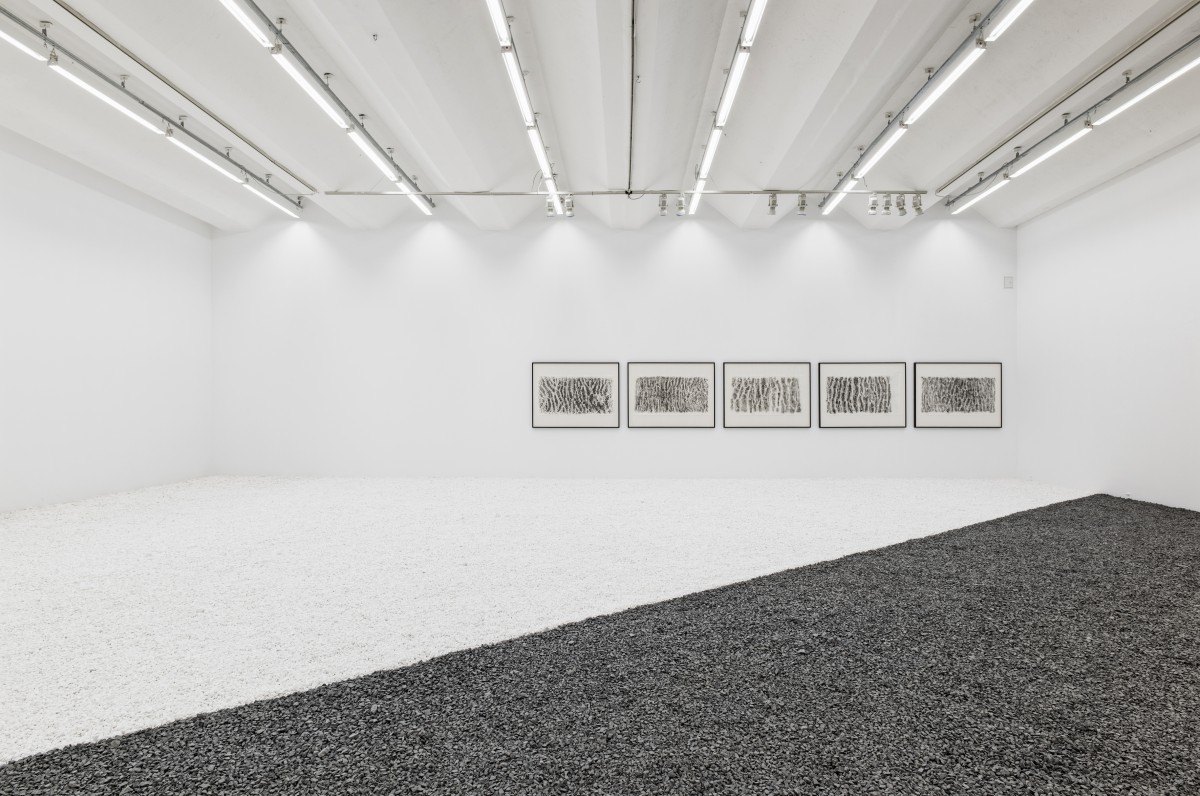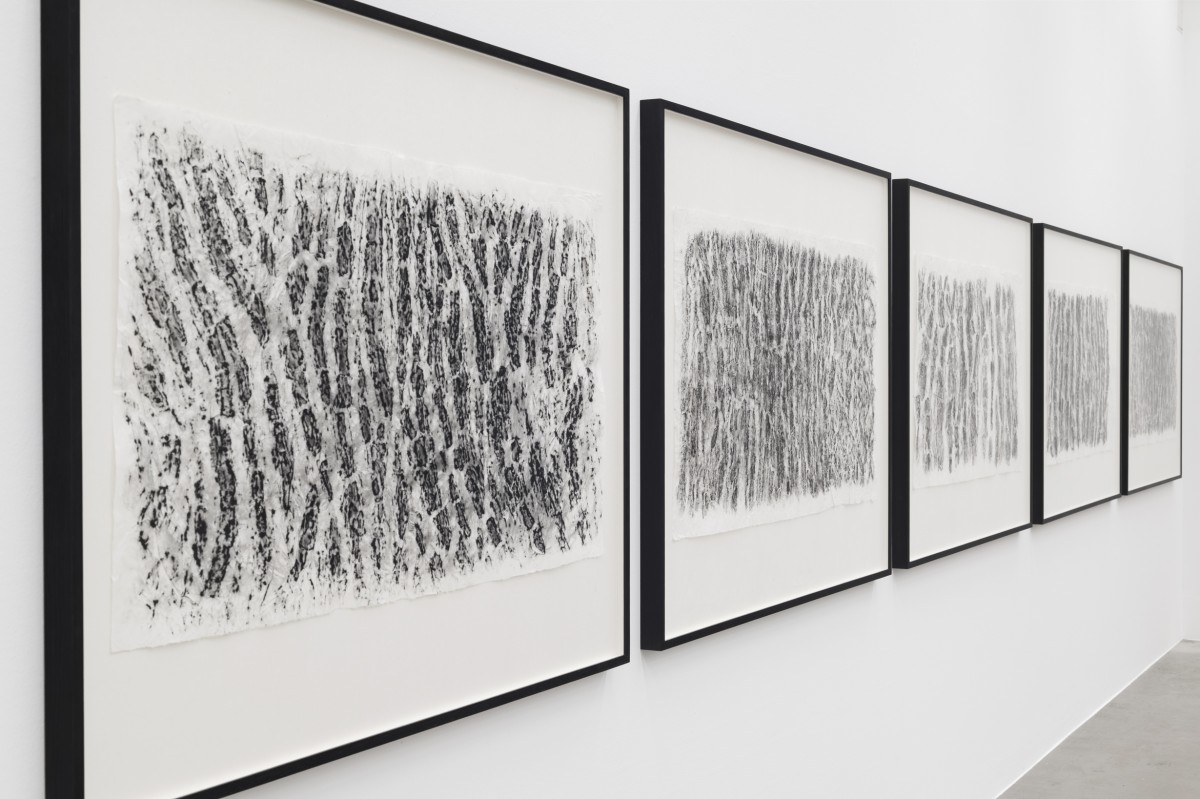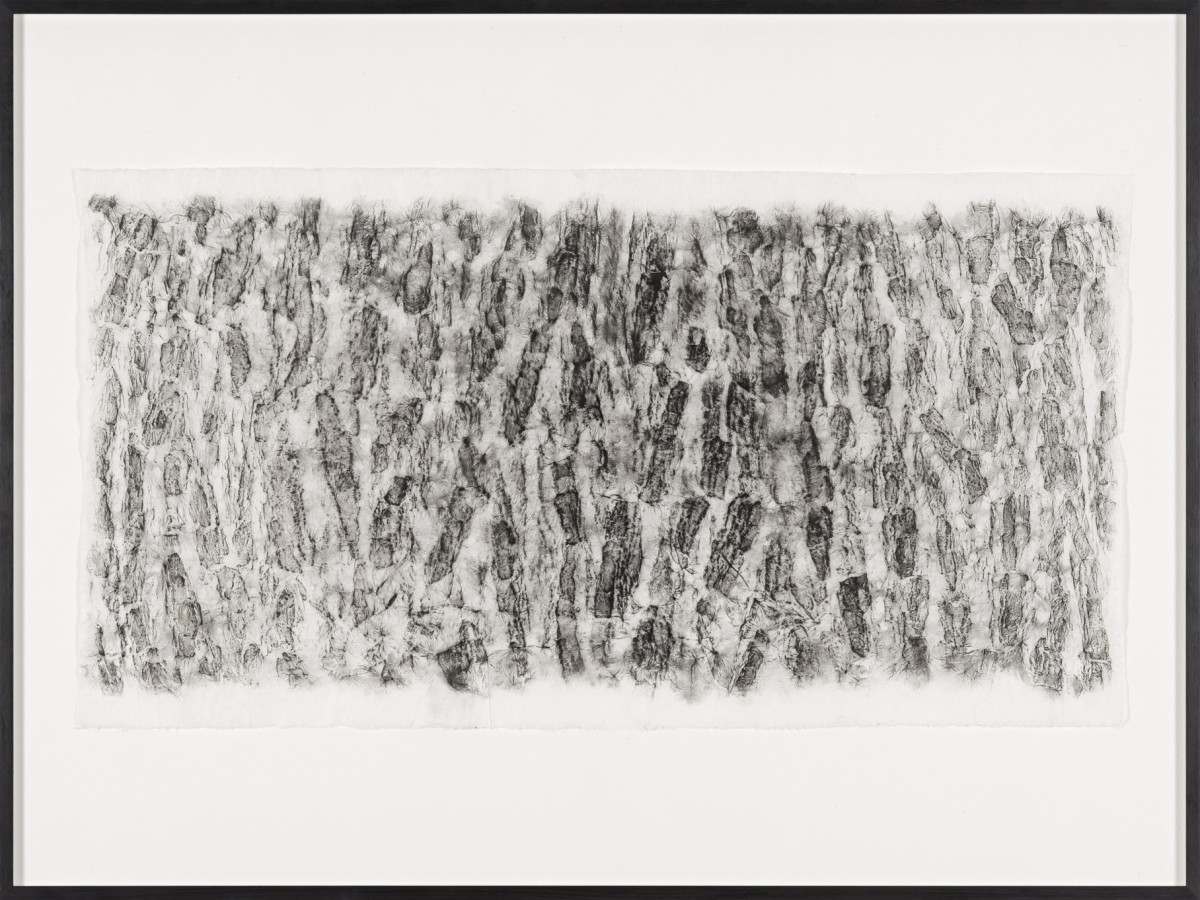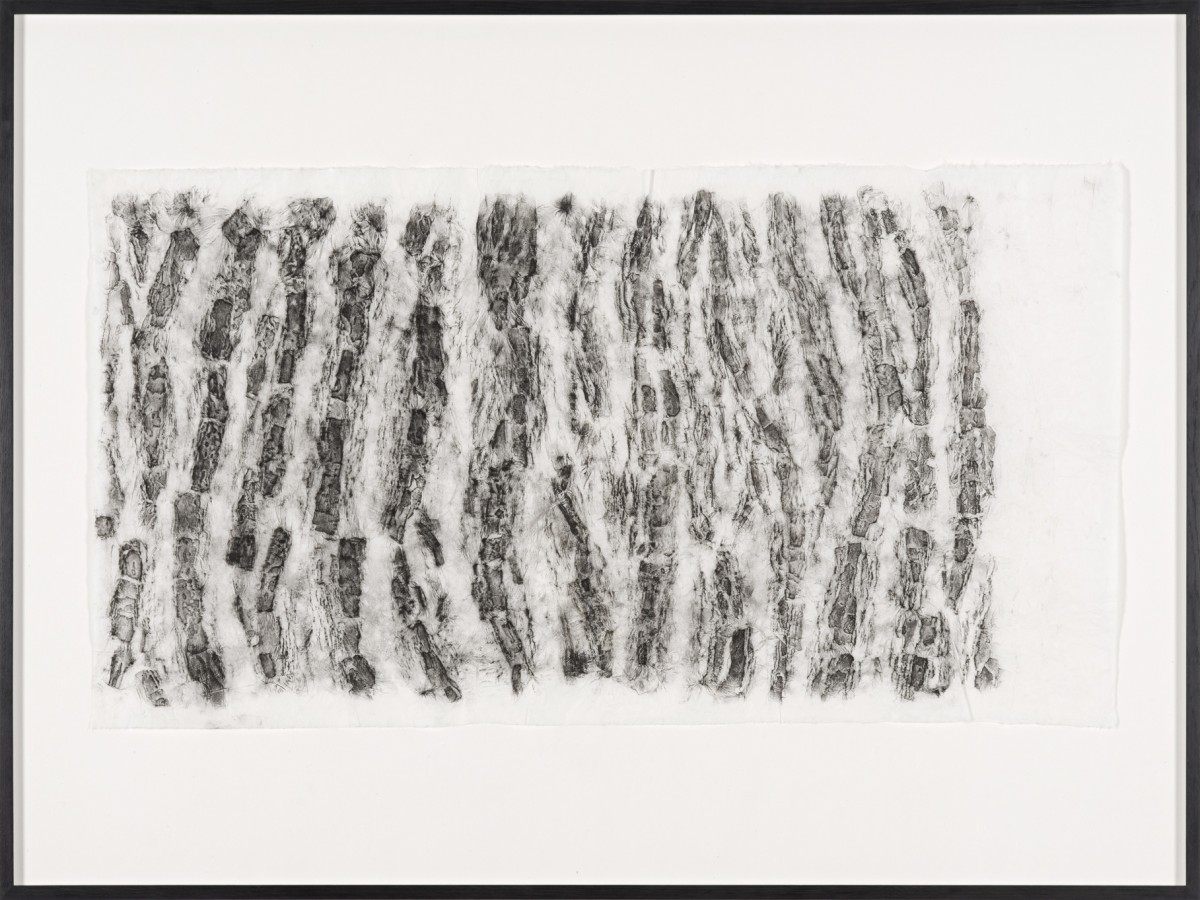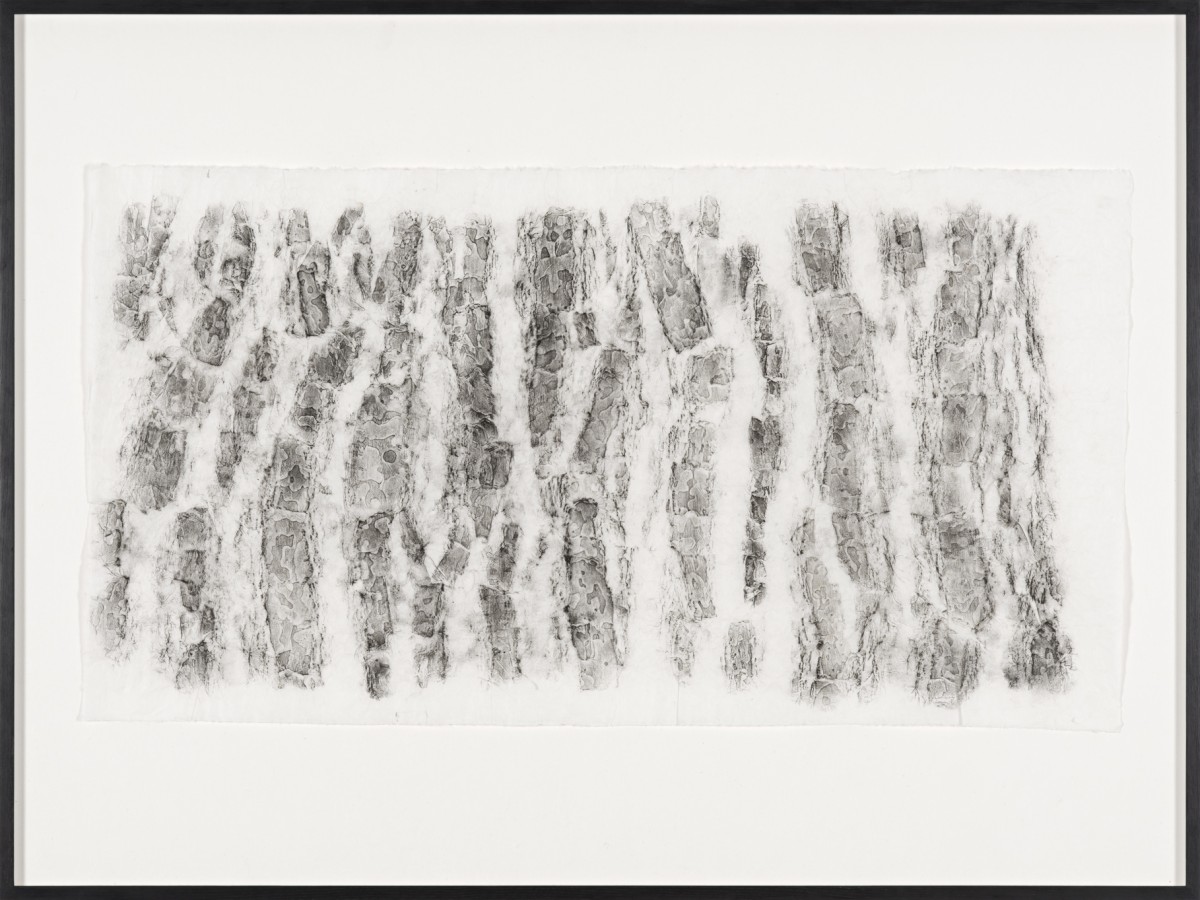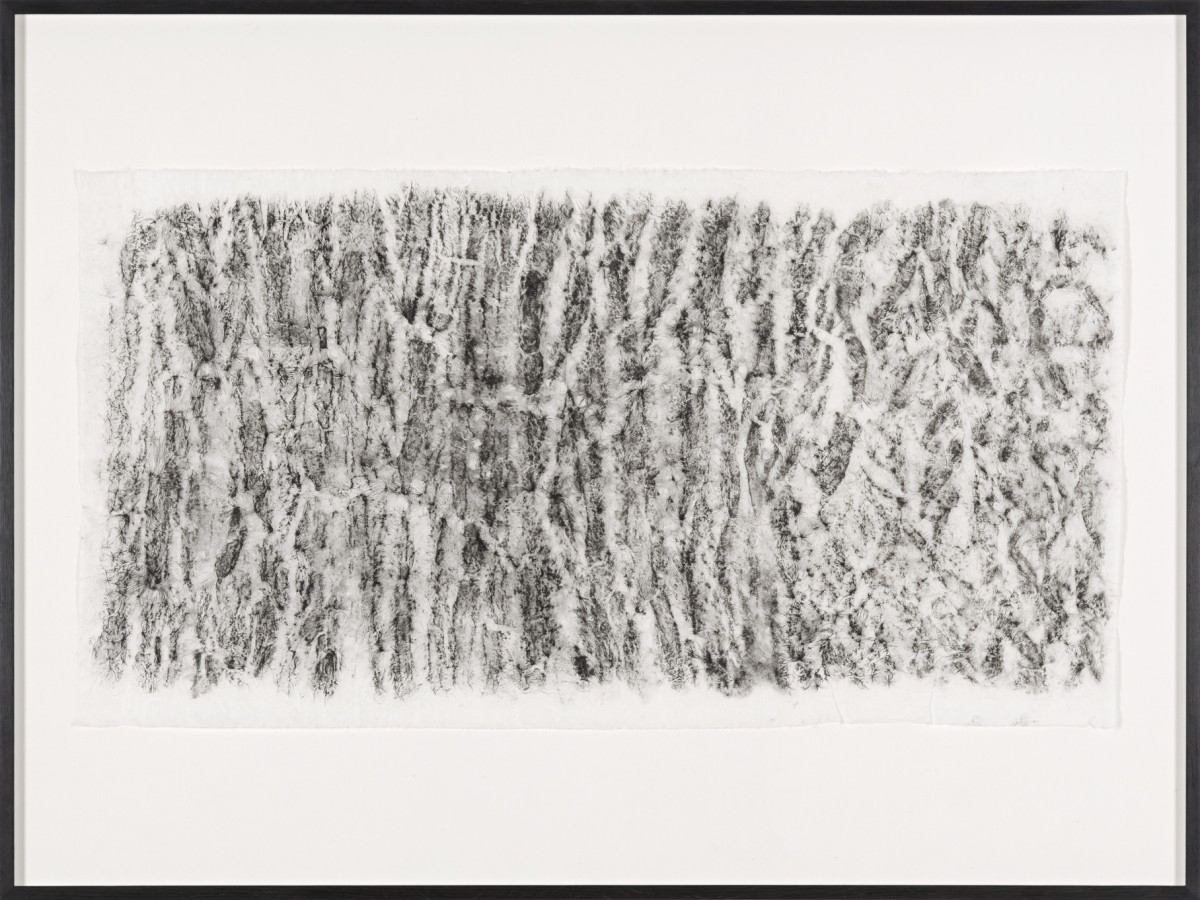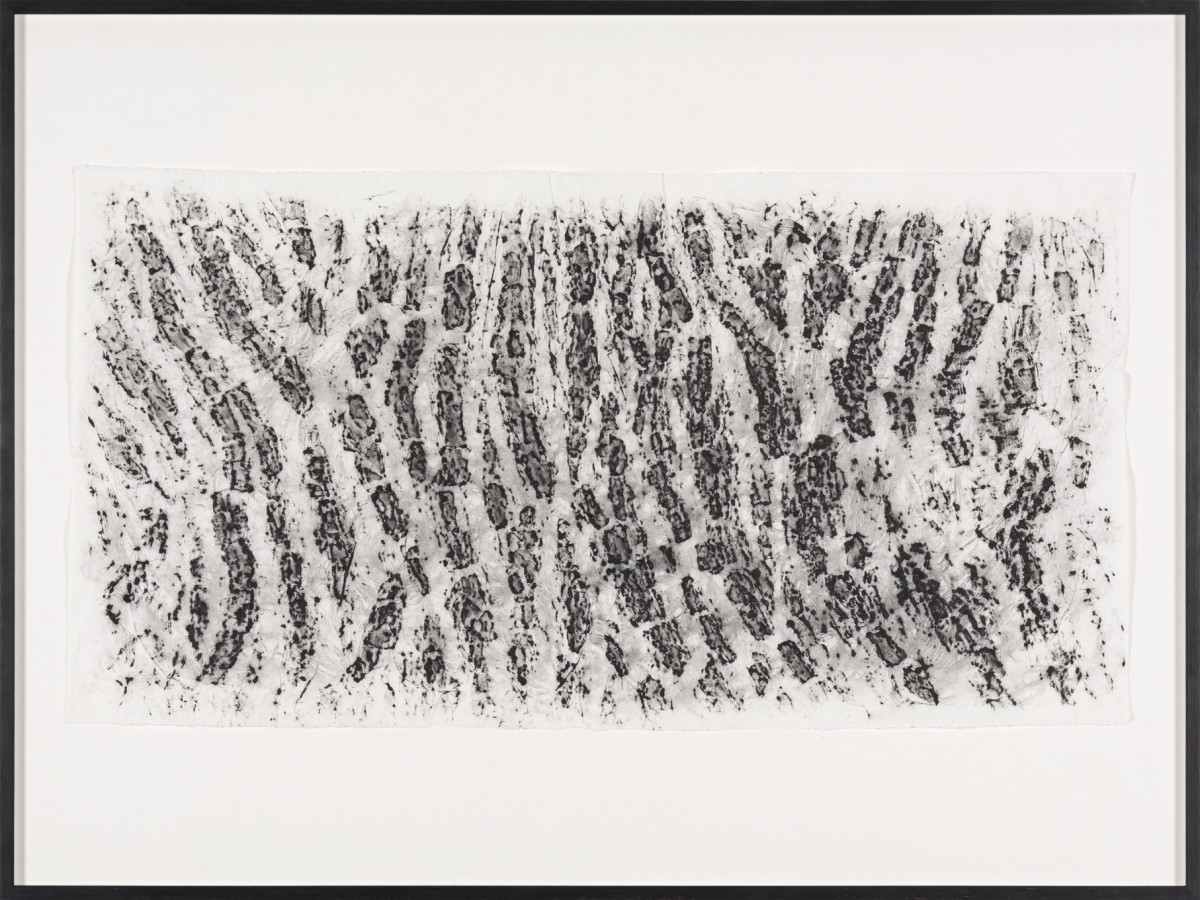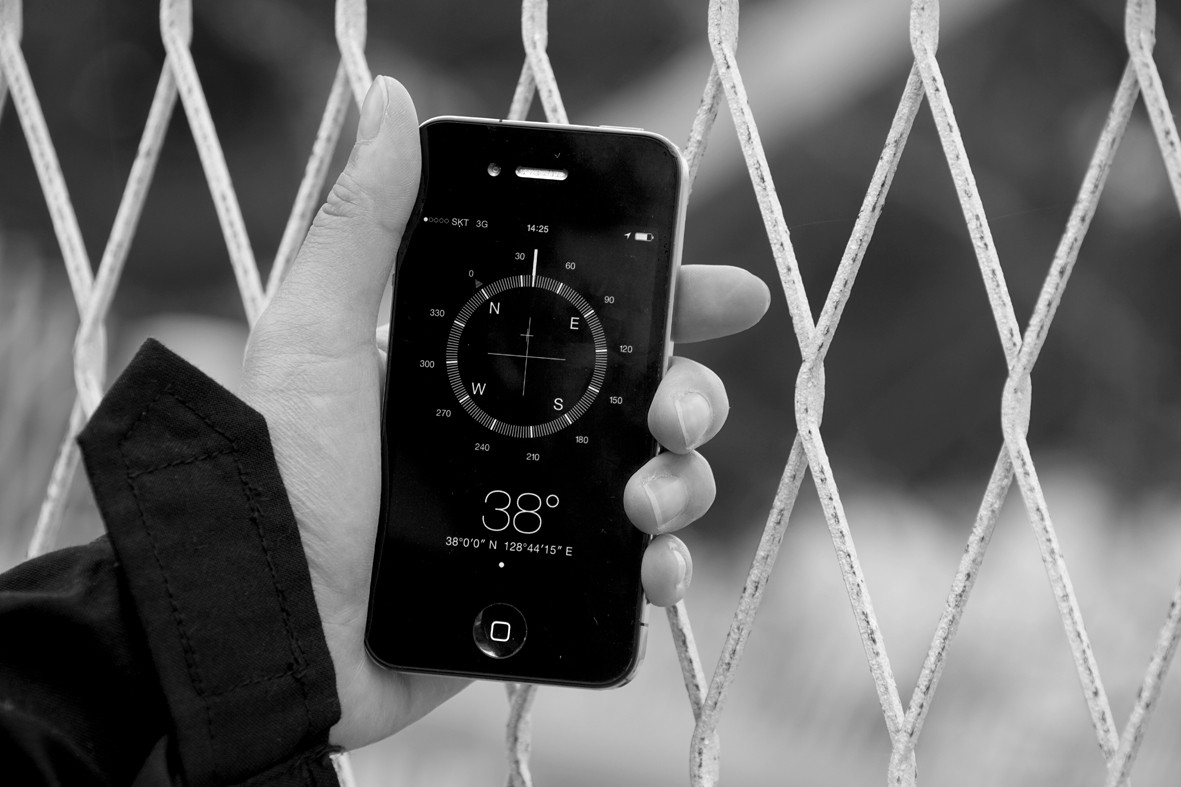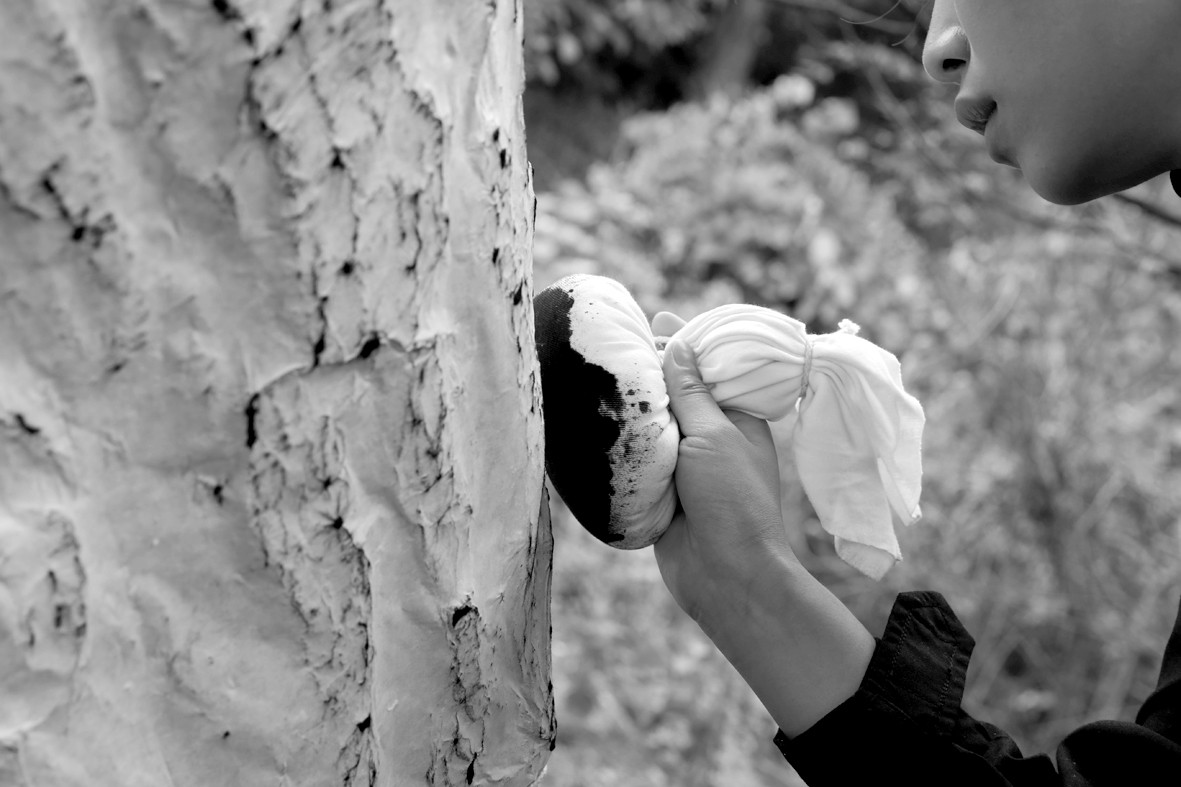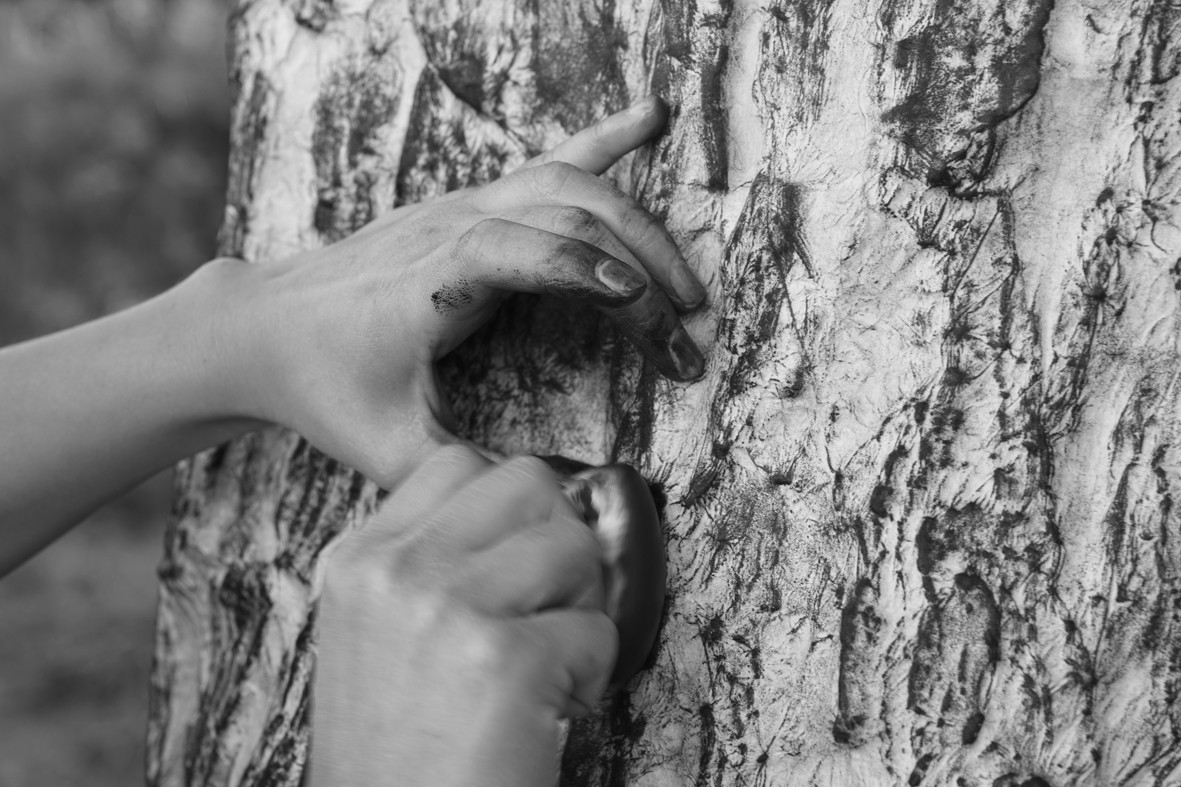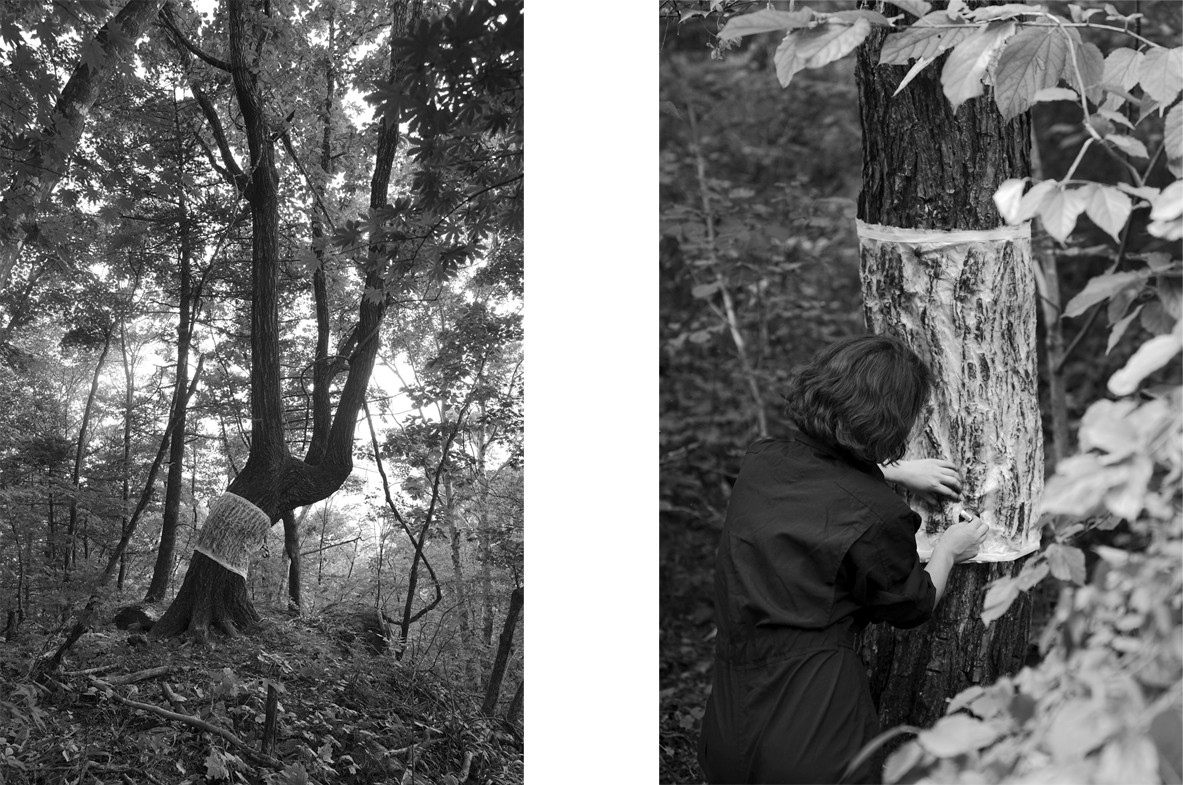EN
Inzision (Incision) is a series of five paper prints made during a journey to the 38th parallel in Korea.
Following World War II and the independence from Japanese occupation, Korea was divided into two supervised zones; the boundary was drawn along the exact course of the 38th parallel. Although the border between North and South Korea (DMZ) shifted after the Korean War, in Korea’s collective memory, the 38th parallel still signifies the tragedy of separation.
Along the former border, Jeewi Lee established ten equidistant topographic points, of which due to the shift of the border five happen to be in South Korea and five in North Korea. At the five locations in South Korea, she selected trees that met her criteria in terms of age and place and used the traditional Asian Takbon printing technique to create prints of the tree bark on Hanji paper. For Jeewi Lee, the artistic translation of the line in the form of these prints visualizes the ever-present scar in her native country.
In Lee's working process, the age of the trees were a relevant criterion, as she only selects trees that were fully grown before the division of the country in 1945. Naturally, trees cannot leave their place on their own. For Lee, they represent a living testimony that exemplifies the time of division since 1945. The prints from the trees can be understood as portraits or fingerprints of witnesses of the history.
A book has also been written about the work, in which her journey along the 38th parallel is recorded. Photographic documentations and personal project protocols of the production process in border areas, restricted military areas and formerly mined combat zones vividly reflect her intervention.
DE
Inzision ist eine Werkreihe von 5 Papierabdrücken die auf einer Reise zum 38.Breitengrad Koreas entstanden sind.
Korea wurde nach dem zweiten Weltkrieg, genau am linearen Verlauf des 38.Breitengrad, in zwei Besatzungszonen geteilt. Auch wenn sich der heutige Grenzverlauf zwischen Nord- und Südkorea (DMZ) durch den Koreakrieg verschoben hat, steht im kollektiven Gedächtnis Koreas dennoch der 38.Breitengrad für die tragische Trennungsgeschichte.
Lee hat entlang der ehemaligen Grenzlinie zehn gleichmäßig verteilte topografische Punkte festgelegt, wobei aus grenzpolitischen Gründen jeweils fünf Punkte in Südkorea und fünf in Nordkorea liegen. An den fünf in Südkorea gelegenen Orten hat sie die Bäume gewählt, die ihren Kriterien in Bezug auf Alter und Ort entsprechen, und von diesen mit Hilfe der traditionellen asiatischen Drucktechnik Takbon, Abdrücke auf Hanji-Papier hergestellt. Für Lee stellt die künstlerische Übersetzung der Linie durch ihre Abdrücke eine Visualisierung der allgegenwärtigen Narbe ihres Heimatlandes dar. Die Abdrücke von den Bäumen können als Porträts oder Fingerabdrücke von Zeugen der Geschichte verstanden werden.
In Lees Arbeitsprozess ist das Alter der Bäume ein relevantes Kriterium, da sie nur Bäume auswählt, die bereits vor der Teilung des Landes im Jahre 1945 ausgewachsen waren. Naturgemäß können Bäume ihren Ort nicht eigenständig verlassen. Sie stellen für Lee ein lebendes Zeugnis dar, das exemplarisch für die Zeit der Teilung seit 1945 steht.
Zu der Arbeit entstand ebenfalls ein Buch in dem ihre Reise an dem 38.Breitengrad entlang festgehalten wird. Fotografische Dokumentationen und persönliche Projektprotokolle des Produktionsprozesses in grenznaher Natur, militärischen Sperrgebieten und ehemals verminten Kampfgebieten geben ihre Intervention lebendig wieder.
Text: Julia Meyer-Brehm
Spacial thanks to: Mischa Leinkauf
